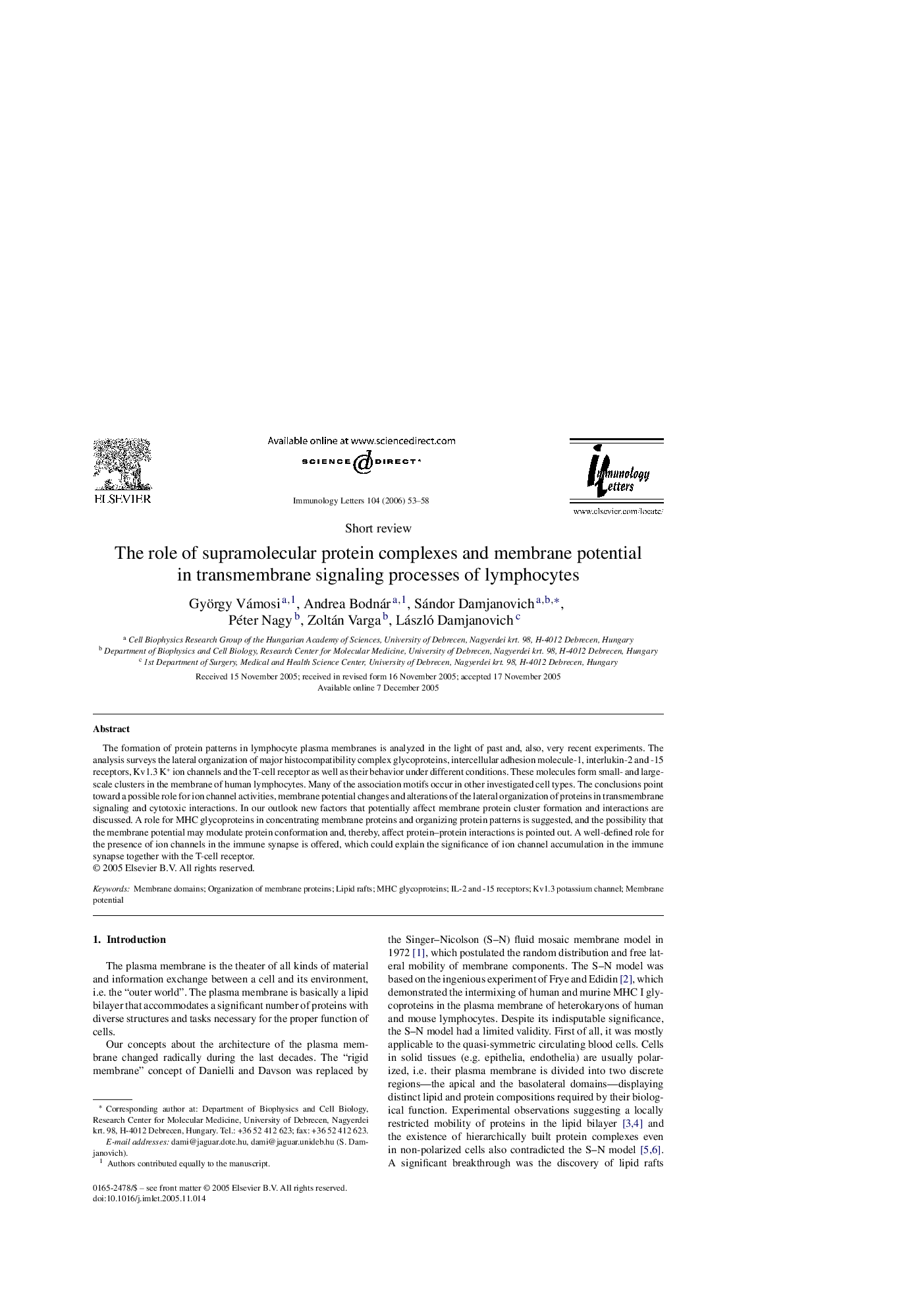| کد مقاله | کد نشریه | سال انتشار | مقاله انگلیسی | نسخه تمام متن |
|---|---|---|---|---|
| 3356459 | 1591584 | 2006 | 6 صفحه PDF | دانلود رایگان |

The formation of protein patterns in lymphocyte plasma membranes is analyzed in the light of past and, also, very recent experiments. The analysis surveys the lateral organization of major histocompatibility complex glycoproteins, intercellular adhesion molecule-1, interlukin-2 and -15 receptors, Kv1.3 K+ ion channels and the T-cell receptor as well as their behavior under different conditions. These molecules form small- and large-scale clusters in the membrane of human lymphocytes. Many of the association motifs occur in other investigated cell types. The conclusions point toward a possible role for ion channel activities, membrane potential changes and alterations of the lateral organization of proteins in transmembrane signaling and cytotoxic interactions. In our outlook new factors that potentially affect membrane protein cluster formation and interactions are discussed. A role for MHC glycoproteins in concentrating membrane proteins and organizing protein patterns is suggested, and the possibility that the membrane potential may modulate protein conformation and, thereby, affect protein–protein interactions is pointed out. A well-defined role for the presence of ion channels in the immune synapse is offered, which could explain the significance of ion channel accumulation in the immune synapse together with the T-cell receptor.
Journal: Immunology Letters - Volume 104, Issues 1–2, 15 April 2006, Pages 53–58